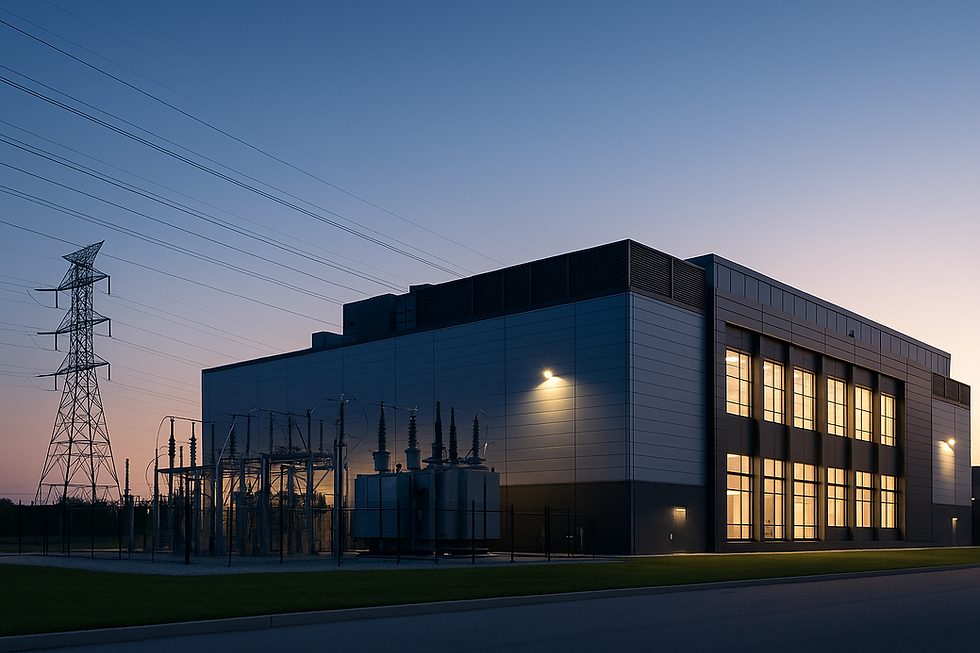What the OpenAI–AMD Deal Means for Investors
- HFF Staff Writer
- Oct 7
- 3 min read

What happened?
On October 6, 2025, OpenAI and AMD announced a multi-year, multi-generation partnership to deploy 6 gigawatts (GW) of AMD AI compute, beginning with Instinct MI450 GPUs ramping in 2H 2026 [1]. Several outlets also reported that, as milestones are met, OpenAI received warrants that could allow it to acquire up to ~10% of AMD (about 160M shares) [2][3][4].
In plain English: OpenAI just locked in a massive, multi-year supply of non-Nvidia chips. AMD, in turn, secured a marquee customer with enormous forward demand for inference-heavy AI workloads. Markets took notice, with AMD shares spiking on the news [4][5].
Why does the OpenAI–AMD partnership matter?
Two big reasons:
Supply diversification in AI. Nvidia has dominated AI training, but hyperscalers and model labs want second sources at scale. A 6-GW commitment signals serious confidence that AMD’s roadmap can support production inference and, increasingly, training where appropriate [1][2].
Cost curves and competition. More viable suppliers typically push performance up and prices down over time. For the broader AI economy—software providers, startups, and enterprises—cheaper, abundant compute can accelerate product roadmaps and adoption. That can support earnings across adjacent sectors (cloud, semis, memory, power equipment) even as margins compress in spots [3].
How could it ripple through the market?
Semiconductors: If AMD executes, it can capture share in AI accelerators and systems—lift for AMD itself and for parts of its supply chain (foundry, substrates, testing). Nvidia remains the leader, but the total pie is expanding. Expect volatility as investors handicap execution and delivery cadence [4][5].
Cloud & data center ecosystem: More AI racks mean more power, cooling, networking, and memory. Utilities, power-equipment makers, advanced cooling vendors, and optical interconnects can benefit as capex follows chips [3].
Software & productivity: Lower compute bottlenecks can broaden AI deployment from pilots to production, potentially improving unit economics for AI-enabled apps—helpful for select software names, but competitive dynamics remain intense [3].
What are the key risks and unknowns?
Execution risk: AMD must ship competitive hardware and software stacks on time (starting with MI450 in late 2026). Any slippage or performance gap vs. peers could blunt impact [1].
Concentration risk: The reported warrant structure ties upside to delivery milestones. Great when things go right; painful if deployment slows or the buyer pivots [2][4].
Cyclicality & hype cycles: AI demand looks durable, but capex waves can overshoot. If customers front-load gear, later digestion periods can pressure revenue and margins across the stack.
Policy & power constraints: Building 6 GW of AI capacity implies significant power and grid infrastructure—subject to permitting, regulation, and regional constraints that can delay ramps [2].
What could this mean for a diversified investor?
Diversification within semis: Instead of “all or nothing” on a single vendor, some investors may prefer a basket approach across enablers (accelerators, memory, networking, power, cooling) to spread single-name risk while remaining exposed to AI capex.
Time horizon matters: The AMD–OpenAI roadmap begins delivering at scale in 2026—that’s not tomorrow. Near-term prices can move on headlines, but fundamentals crystallize over multiple quarters.
Risk management: Position sizing, rebalancing, and tax-aware profit taking can help control downside if AI narratives cool or if execution lags.
Want help pressure-testing your allocation? Our fiduciary advisors can review your plan and walk you through scenario analysis for AI-themed investments—opportunities and risks—within a disciplined framework.
Resources
Advanced Micro Devices. “AMD and OpenAI Announce Strategic Partnership to Deploy 6 Gigawatts of AMD GPUs.” AMD Investor Relations, 6 Oct. 2025, ir.amd.com/news-events/press-releases/detail/1260/amd-and-openai-announce-strategic-partnership-to-deploy-6-gigawatts-of-amd-gpus.
Reuters Breakingviews. Cyran, Robert. “OpenAI Takes Its Cut for Expanding the AI Boom.” Reuters, 6 Oct. 2025, www.reuters.com/commentary/breakingviews/openai-takes-its-cut-expanding-ai-boom-2025-10-06/.
The Wall Street Journal. Whelan, Robbie. “How AMD Came From Behind to Mount a Challenge in the AI Chip Wars.” 7 Oct. 2025, www.wsj.com/tech/ai/amd-openai-chip-deal-nvidia-competitor-37692514.
Reuters. “AMD Signs AI Chip-Supply Deal with OpenAI, Gives It Option to Take 10% Stake.” 6 Oct. 2025, www.reuters.com/business/amd-signs-ai-chip-supply-deal-with-openai-gives-it-option-take-10-stake-2025-10-06/.
Bloomberg News. “AMD Inks Chip Deal With OpenAI That Triggers Explosive Rally.” 6 Oct. 2025, www.bloomberg.com/news/articles/2025-10-06/openai-signs-amd-chips-deal-worth-tens-of-billions-of-dollars.
Bellan, Rebecca. “AMD to Supply 6GW of Compute Capacity to OpenAI in Chip Deal Worth Tens of Billions.” TechCrunch, 6 Oct. 2025, techcrunch.com/2025/10/06/amd-to-supply-6gw-of-compute-capacity-to-openai-in-chip-deal-worth-tens-of-billions/.
Investor’s Business Daily. “AMD Stock Surges as Chipmaker Latest to Get OpenAI Deal.” 6 Oct. 2025, www.investors.com/news/technology/amd-stock-chipmaker-latest-openai-deal/.



Comments